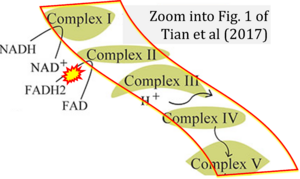Tian 2017 Front Genet
| Tian R, Yin D, Liu Y, Seim I, Xu S, Yang G (2017) Adaptive evolution of energy metabolism-related genes in hypoxia-tolerant mammals. Front Genet 8:205. https://doi.org/10.3389/fgene.2017.00205 |
Tian R, Yin D, Liu Y, Seim I, Xu S, Yang G (2017) Front Genet
Abstract: Animals that are able to sustain life under hypoxic conditions have long captured the imagination of biologists and medical practitioners alike. Although the associated morphological modifications have been extensively described, the mechanisms underlying the evolution of hypoxia tolerance are not well understood. To provide such insights, we investigated genes in four major energy metabolism pathways, and provide evidence of distinct evolutionary paths to mammalian hypoxia-tolerance. Positive selection of genes in the oxidative phosphorylation pathway mainly occurred in terrestrial hypoxia-tolerant species; possible adaptations to chronically hypoxic environments. The strongest candidate for positive selection along cetacean lineages was the citrate cycle signaling pathway, suggestive of enhanced aerobic metabolism during and after a dive. Six genes with cetacean-specific amino acid changes are rate-limiting enzymes involved in the gluconeogenesis pathway, which would be expected to enhance the lactate removal after diving. Intriguingly, 38 parallel amino acid substitutions in 29 genes were observed between hypoxia-tolerant mammals. Of these, 76.3% were radical amino acid changes, suggesting that convergent molecular evolution drives the adaptation to hypoxic stress and similar phenotypic changes. This study provides further insights into life under low oxygen conditions and the evolutionary trajectories of hypoxia-tolerant species.
• Bioblast editor: Gnaiger E
Correction: FADH2 and Complex II
- FADH2 is shown as the substrate feeding electrons into Complex II (CII). This is wrong and requires correction - for details see Gnaiger (2024).
- Gnaiger E (2024) Complex II ambiguities ― FADH2 in the electron transfer system. J Biol Chem 300:105470. https://doi.org/10.1016/j.jbc.2023.105470 - »Bioblast link«
Hydrogen ion ambiguities in the electron transfer system
Communicated by Gnaiger E (2023-10-08) last update 2023-11-10
- Electron (e-) transfer linked to hydrogen ion (hydron; H+) transfer is a fundamental concept in the field of bioenergetics, critical for understanding redox-coupled energy transformations.
- However, the current literature contains inconsistencies regarding H+ formation on the negative side of bioenergetic membranes, such as the matrix side of the mitochondrial inner membrane, when NADH is oxidized during oxidative phosphorylation (OXPHOS). Ambiguities arise when examining the oxidation of NADH by respiratory Complex I or succinate by Complex II.
- Oxidation of NADH or succinate involves a two-electron transfer of 2{H++e-} to FMN or FAD, respectively. Figures indicating a single electron e- transferred from NADH or succinate lack accuracy.
- The oxidized NAD+ is distinguished from NAD indicating nicotinamide adenine dinucleotide independent of oxidation state.
- NADH + H+ → NAD+ +2{H++e-} is the oxidation half-reaction in this H+-linked electron transfer represented as 2{H++e-} (Gnaiger 2023). Putative H+ formation shown as NADH → NAD+ + H+ conflicts with chemiosmotic coupling stoichiometries between H+ translocation across the coupling membrane and electron transfer to oxygen. Ensuring clarity in this complex field is imperative to tackle the apparent ambiguity crisis and prevent confusion, particularly in light of the increasing number of interdisciplinary publications on bioenergetics concerning diagnostic and clinical applications of OXPHOS analysis.
- Fig. 1 of Tian et al (2017) sets the respiratory Complexes CI - CII - CIII - CIV - CV in a row, which is an ambiguous representation of a linear respiratory 'chain', CI → CII → CIII → CIV, although now lines or arrows connect the electron transfer Complexes (connections should be shown as CI → CIII → CIV and CII → CIII → CIV). The arrow, however, from CIV to CV is entirely contrary to the concept of coupling through the protonmotive force.
Labels:
Stress:Hypoxia




